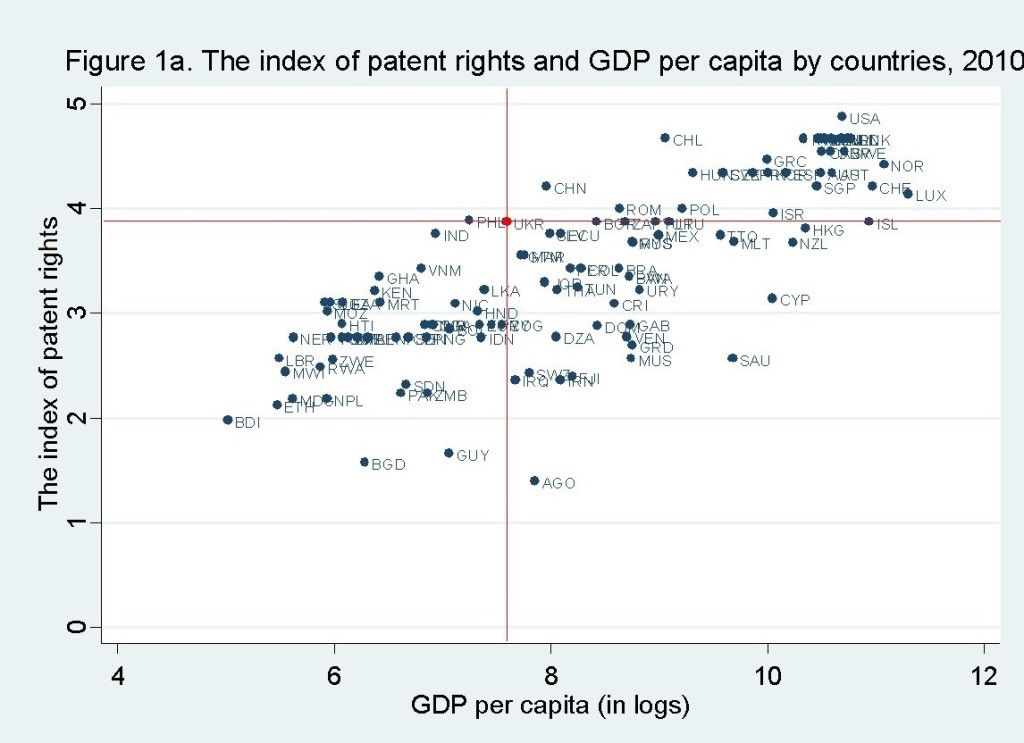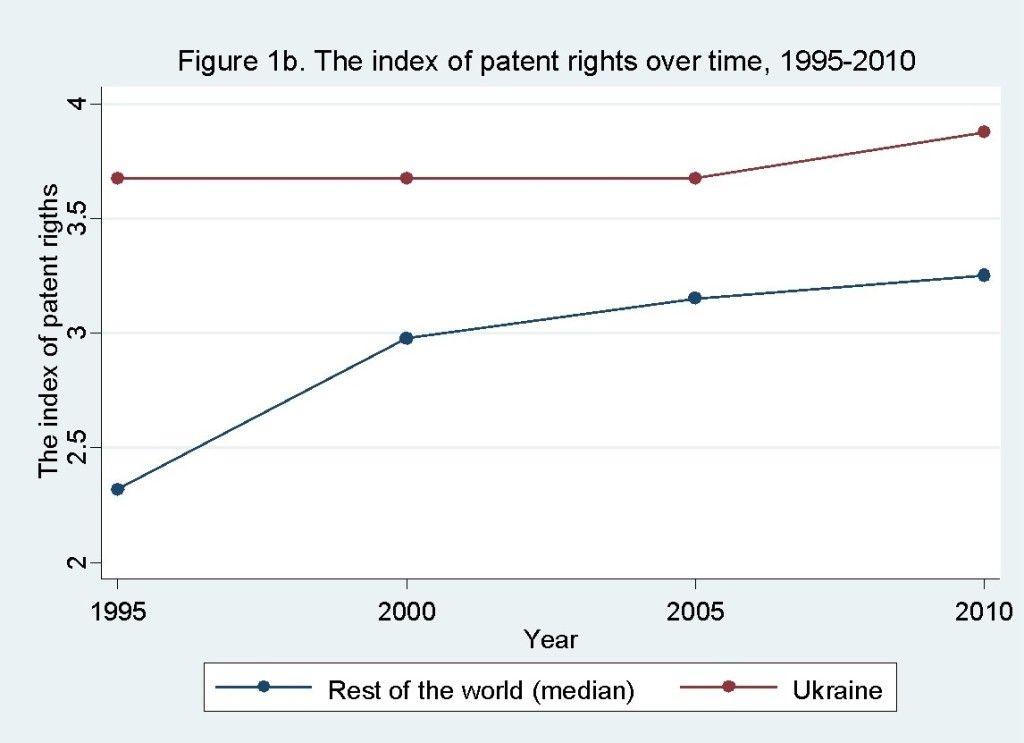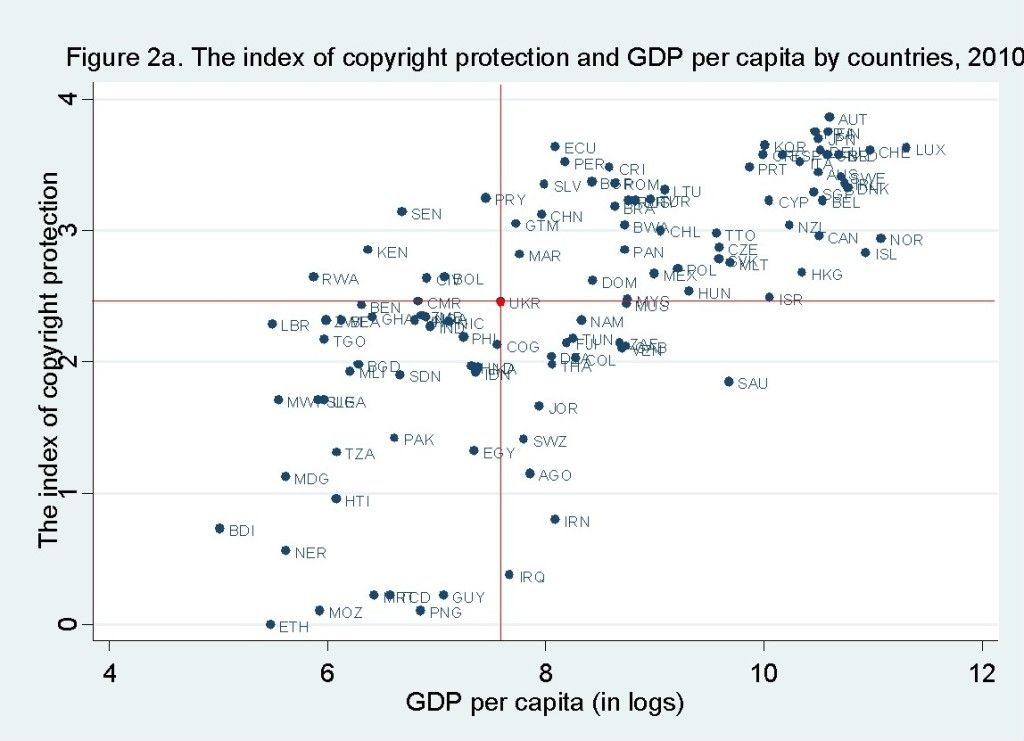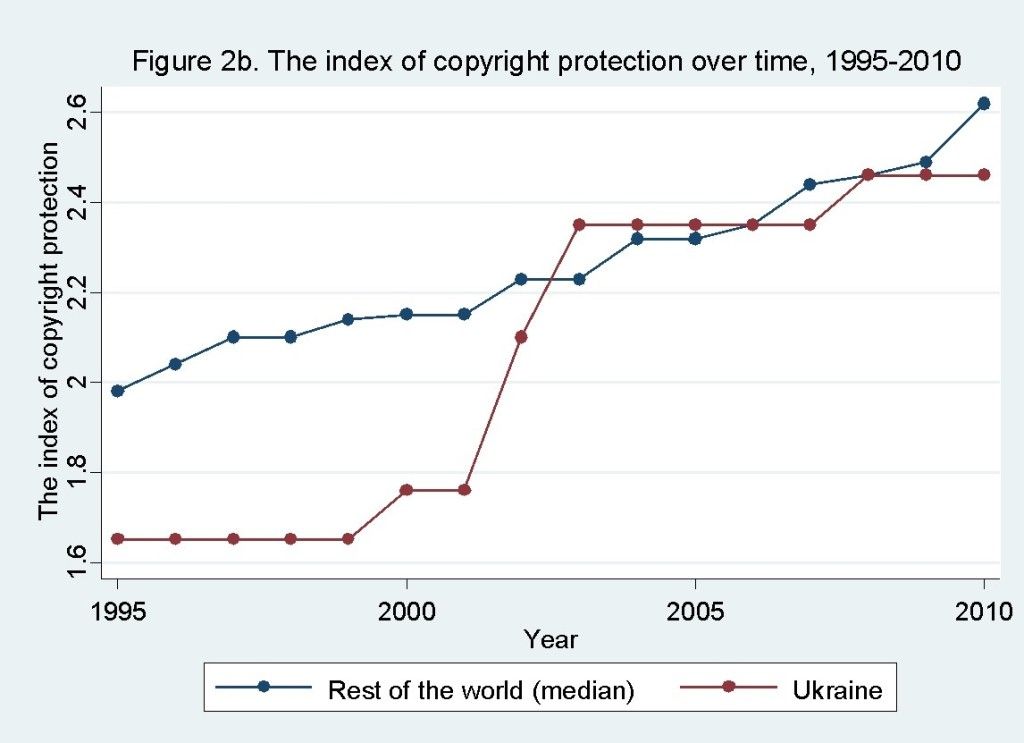Like many other developing countries, Ukraine has problems with protection and enforcement of the intellectual property (IP) rights. The empirical evidence to date suggests that the advantages reaped by enacting stronger IP protection outweigh the disadvantages, including the loss of imitative products and markets. While IP reform may seem a bitter pill, it is in Ukraine’s interest to swallow it.
Ukraine is one of many developing countries that has faced external pressure regarding intellectual property (IP) in the last 20 years. In Ukraine’s case, this external pressure has come from various sources and channels, but always to the same end: namely, bolstering Ukraine’s system of intellectual property rights (IPRs) and protections to bring it into line with that of developed countries.
At the international level, the World Trade Organization (WTO) standardized IP laws through its Agreement on Trade-Related Aspects of Intellectual Property Rights (TRIPS). Negotiated in 1994, TRIPS prescribes minimum standards for domestic protection of IP, and requires specific enforcement measures as well. Any country seeking membership in the WTO must ratify TRIPS. Like so many other developing countries, Ukraine’s desire for access to the lucrative markets that come with WTO membership outweighed its reluctance to implement the stronger IP protections and enforcement mechanisms mandated by TRIPS
Zooming in to the continental view, Ukraine requires strengthened IP protections to meet its obligations to the European Union under the Agreement on Deep and Comprehensive Free Trade Area (DCFTA), which was signed on 27 June 2014 as part of the larger Association Agreement between the EU and Ukraine. The DCFTA’s provisions on IP complement those found in TRIPS, and require similar enforcement measures
Last but certainly not least, Ukraine has been the target of intense unilateral pressure at the hands of the United States Trade Representative (USTR). Since 1989, the USTR has been targeting countries like Ukraine for intervention pursuant to Section 301 of the U.S. Trade Act of 1974. Offending countries may be either added to the Priority Watch List (PWL) to receive “increased attention” in a particular area of concern, or designated a Priority Foreign Country (PFC) and subjected to a six-month investigation and possible unilateral U.S. trade sanctions. Ukraine was first designated a PFC in 2001 and was then upgraded to the PWL in 2006, only to resume its PFC designation in 2013. At the time of writing, Ukraine was on the PWL .
The state of Ukraine’s IPRs
Against that background, how do Ukraine’s protections and enforcement of IP rights compare to other countries?
We start first with patent rights. A useful measure of the strength of countries’ patent rights is the index established by Ginarte and Park (1997). Spanning five measures of patent laws (patent coverage, membership in international treaties, duration of protection, method of enforcement, and restrictions on patent rights), the index score takes a value between zero and five, depending on the number of conditions satisfied. Figure 1a plots the scores in relation to GDP per capita across 120 countries for the year 2010 (the last year for which the index is available). Figure 1b shows the score for Ukraine versus the median for the other 119 countries from 1995 to 2010. Ukraine scored 3.88 for its patent rights in 2010—at which time the median score was 3.275. Thirty-one countries scored higher than Ukraine in 2010, and all of them had a higher level of development (as measured by income per capita). It is further apparent from Figure 1b that Ukraine’s score remained constant from 1995 to 2005 and increased between 2005 and 2010. This increase is the result of Ukraine ratifying TRIPs in 2008. The rest of countries in the sample, by contrast, were generally more active in strengthening their patent rights. The sample median score was rising in each five-year period.
Turning next to copyright protection, we will employ the copyright index established in Reynolds (2003) and Park (2005), which covers four measures of copyright protection (coverage, usage, enforcement, and membership in international treaties), and ranges from zero to four. Repeating the above analyses using copyright protection, we see from Figures 2a and 2b that Ukraine offers a relatively weak protection in this area of IP. Ukraine’s score was 2.46 in 2010, when the median score was 2.58. Ukraine fell behind 62 (out of 116) countries, eight of which had lower levels of development. Figure 2b shows that Ukraine has made efforts to strengthen its copyright protection since 1995, but its score remained below median in 2010. Ukraine has received plenty of criticism for its weak copyright protection, and corresponding attention from the USTR.
Classic arguments for and against IP protection
As the above data suggest, progress in strengthening IPRs in Ukraine has been slow relative to other countries of similar development. But is strengthening IPRs in Ukraine’s direct interest, or are these IPR reforms merely the price for it to gain as access to WTO, EU and US markets? More generally, what are the arguments for and against strong IP protections?
The textbook argument in favor of IP protection is that it provides creators an incentive to innovate and create by excluding copyists and imitators for a specific period of time—thereby allowing creators to earn a monopolistic return on the cost of their creations. The obvious criticisms of IP rights are that they raise the price of protected products above market levels, and hamper the diffusion of new technologies and innovations. In light of these arguments for and against, the optimal level of IP protection would appear to be some middle-ground that strikes a balance between fostering innovation and the social costs of creating monopolies.
The impact of globalization
The above analysis remains highly applicable today, but it ignores one key consideration: the international aspect of IP. Modern economies are largely interlinked, and one country’s policies on IP protection may impact other countries’ policies. This interdependence must be taken into account by lawmakers tasked with modernizing a country’s system of IPRs.
The inclusion of IPRs into the Uruguay Round of multilateral negotiations was a highly contentious move by the United States and its supporters. Proponents of global IP reform have stanchly argued that stronger IPRs benefit developing countries by encouraging the flow of innovative products and technologies into their domestic markets. Opponents of global IP reforms have countered that stringent IPRs in developing countries act as a barrier to the otherwise legitimate trade in imitative products, and serve no purpose other than allowing foreign corporations to price gouge at the expense of the already disadvantaged consumers of developing countries.
What have we learned?
Empirical studies support the claim that strengthening IPRs in developing countries promotes those countries’ access to foreign products and technologies. Ivus (2010), for example, found that the strengthening of IPRs under TRIPS increased developing countries’ imports of innovative products in industries that rely most heavily on patent protection. Importantly, the increase in the value of imports was driven by increased quantity, rather than increased price. This suggests that stronger IPRs do not limit developing countries’ access to innovative products and technologies by leading to higher prices. The results in Ivus (2015) further show that patent protection is a significant institutional factor in U.S. firms’ decisions over whether to introduce new products and processes into a developing country marketplace. The variety of products imported from the U.S. expands in response to strengthening patent rights in developing countries. Using firm-level data from Eastern Europe and the former Soviet Union, Javorcik (2004) found that weak patent rights deter foreign investors in high-tech industries. Branstetter (2006) studied the responses of U.S. multinational firms to IPR reforms in host countries between 1982 and 1999 and found a positive effect on royalty payments for technology transferred to affiliates, affiliate R&D expenditures, and total levels of foreign patent applications. Branstetter et al. (2011) found that U.S. multinational activity expanded following IPR reform, and more significantly, that industrial production in reforming countries rose as well. These findings suggest that the decline in reforming countries’ imitative activity is small, and more than offset by the expansion of multinational activity.
Conclusion
Ukraine’s relationship with IP has been a tumultuous one, and remains far from settled. For as long as facets of IP (like copyright protection) remain neglected at home, Ukraine will continue to face pressure from abroad and the looming prospect of exclusion from lucrative markets. The empirical evidence to date suggests that the advantages reaped by enacting stronger IP protections outweigh the disadvantages, including the loss of imitative products and markets. However, there remains the lingering, nagging feeling that bringing domestic laws into compliance with the demands of developed countries serves the interests of those developed countries and their multinational conglomerates far more than the interests of consumers and firms at home. While IP reform may seem a bitter pill, the evidence suggests that it is in Ukraine’s interest to swallow it.
References
Branstetter, Lee, Ray Fisman, and C. Fritz Foley (2006), “Do Stronger Intellectual Property Rights Increase International Technology Transfer? Empirical Evidence from U.S. Firm-Level Panel Data,” Quarterly Journal of Economics, 121(1): 321-349.
Branstetter, Lee, Ray Fisman, C. Fritz Foley and Kamal Saggi (2011), “Does Intellectual Property Rights Reform Spur Industrial Development?” Journal of International Economics, 83(1): 27-36.
Ginarte, Juan C., and Walter G. Park (1997). “Determinants of Patent Rights: A Cross-national Study.” Research Policy, 26(3): 283-301.
Ivus, Olena (2010). “Do Stronger Patent Rights Raise High-Tech Exports to the Developing World?” Journal of International Economics, 81(1): 38-47.
Ivus, Olena (2015). “Does stronger patent protection increase export variety? Evidence from U.S. product-level data,” Journal of International Business Studies, DOI 10.1057/jibs.2015.12.
Javorcik, Beata (2004), “The Composition of Foreign Direct Investment and Protection of Intellectual Property Rights: Evidence from Transition Economies,” European Economic Review, 48: 39-62.
Park, Walter G. (2005), “Do Intellectual Property Rights Stimulate R&D and Productivity Growth? Evidence from Cross-national and Manufacturing Industries Data”, in Jonathan Putnam, ed. Intellectual Property and Innovation in the Knowledge-Based Economy, Industry Canada, Ottawa, pp.9:1–9:51.
Reynolds, Taylor (2003), “Quantifying the Evolution of Copyright and Trademark Law,” PhD thesis, American University.
Attention
The author doesn`t work for, consult to, own shares in or receive funding from any company or organization that would benefit from this article, and have no relevant affiliations






